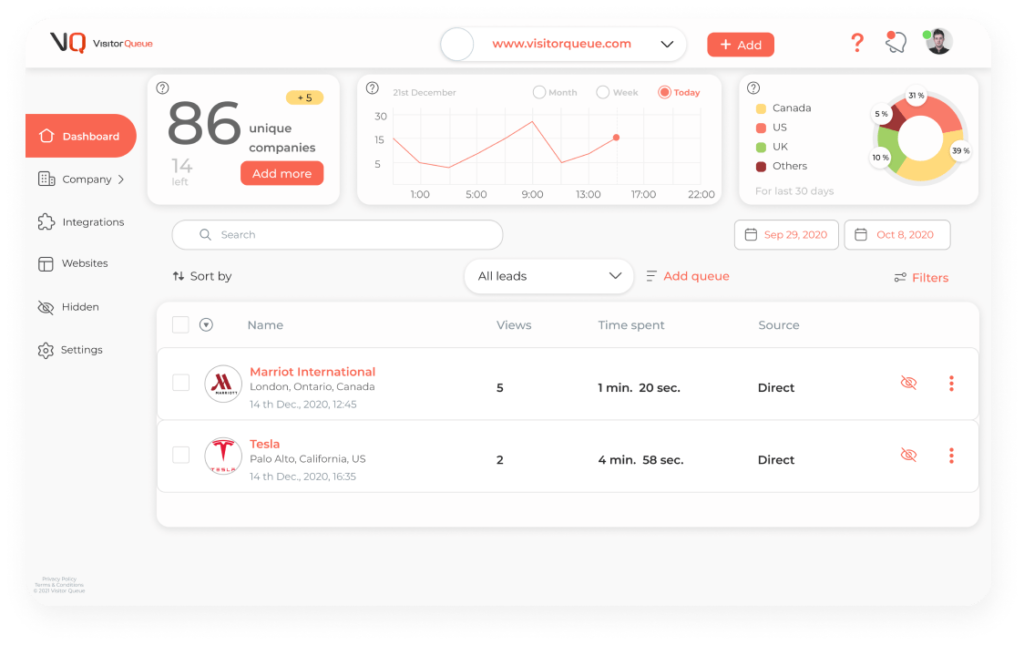Bringing a new product or service to market can be as exciting as it is risky. Whether you’re launching something brand new or entering a different market segment, you need more than just a good idea to be successful. This is where a go-to-market, or GTM, strategy comes in. Without a clear GTM strategy, you’re essentially rolling the dice on launch day. Keep reading to learn how to build a successful go-to-market strategy in 8 steps. First, let’s define what it even is.
What is a Go-to-Market Strategy?
A go-to-market strategy is an action plan that outlines how a company will introduce a product or service to a specific market. It includes everything from defining your target audience to positioning, pricing, sales and marketing channels, and how you’ll support customers after the sale. While some confuse a GTM strategy with a general marketing strategy, the two are quite different. A marketing strategy often addresses broad, long-term goals, while a GTM strategy is product-specific and tightly focused on the initial phase of taking that product to market. Done well, a GTM strategy helps ensure your launch is not only seen by the right people but received in a way that generates early traction.
Why You Need a Go-to-Market Strategy
Launching a product without a GTM strategy is like setting off on a road trip with no map. You may eventually get where you’re going, but the odds of hitting dead ends and burning fuel unnecessarily are high. A go-to-market strategy aligns everyone on your team around the same objectives and ensures that your messaging, pricing, promotion, and distribution are all tailored to the market you’re trying to reach. It also helps you avoid costly mistakes, like targeting the wrong buyer, mispricing your product, or choosing ineffective marketing channels.

How to Build a Go-to-Market Strategy: 8 Steps
By now, you’re probably wondering how to build your strategy. Let’s go over the 8 steps that go into getting started.
Step 1: Define Your Market
Before you build anything else, you need to know who you’re trying to reach. This means identifying your target market, narrowing down your ideal customer profile, and understanding their needs, challenges, and buying behavior. This is where research plays a major role. You’ll want to look at factors like industry, company size, geographic location, and even the job titles of decision-makers. But it’s not just about demographics. Dig into your audience’s pain points and priorities. Why would they care about your product? What outcomes are they looking for? This level of understanding allows you to position your solution as a clear answer to a real problem.
Step 2: Know Your Value Proposition
With your audience clearly defined, the next step is to articulate what makes your product worth buying. Your value proposition should explain how your product solves a specific problem, what benefits it delivers, and why it’s a better choice than the alternatives. If you’re not crystal clear on your value, neither will your prospects be. Try to think in terms of outcomes rather than features. For example, your clients may not care about “real-time analytics”, but they will care about the tangible benefits like money saved.
Step 3: Choose a Sales Strategy
Once you’ve nailed your value, you need to decide how you’ll sell it. Your sales strategy depends heavily on your product, your price point, and your customers. For example, a self-serve SaaS tool might benefit from a product-led growth strategy, where users sign up for free trials and upgrade on their own. On the other hand, an enterprise-level solution likely requires a consultative, high-touch sales approach with longer cycles and multiple stakeholders.
Your GTM strategy should outline what type of sales model you’ll use, whether inbound, outbound, channel-based, or direct, and how leads will be qualified and nurtured through the pipeline. Additionally, alignment between marketing and sales at this stage is essential to avoid friction and finger-pointing once the leads start rolling in.

Step 4: Build Your Marketing Plan
Marketing supports your go-to-market strategy by generating awareness and interest at each stage of the funnel. Once you know who you’re targeting and what you’re selling, you need to develop campaigns that will capture attention and move prospects toward action. This includes everything from content and email to social media, SEO, paid ads, events, and partnerships. Keep in mind that effective marketing isn’t just about being everywhere, it’s about being where your audience is. Your audience may not be on Instagram, so it’s not necessarily important to take the time to post there.
Step 5: Set Your Pricing Strategy
How you price your product communicates its value and influences how buyers perceive it. While competitive analysis is helpful, your pricing should also reflect the results you deliver. Are you saving your clients time? Helping them generate revenue? Replacing multiple tools with one? All of these factors should play into how you set your price. Your GTM plan should include your pricing model, like if it’s a subscription, per-seat, usage-based, or tiers. If you’re launching into a crowded market, you may need to consider introductory pricing or bundling strategies to gain traction.
Step 6: Plan for Customer Success
Your go-to-market strategy doesn’t end once a deal is signed. In fact, customer onboarding and retention are just as important as acquisition, especially in B2B, where recurring revenue and long-term relationships drive growth. A strong GTM strategy includes a clear handoff from sales to customer success, as well as plans for onboarding, training, and ongoing support. The goal is to ensure customers not only see value quickly but stay engaged and satisfied over time. This also sets the stage for upsells, renewals, and referrals, all of which are easier when customers feel supported and successful.
Step 7: Align Internally
One of the biggest reasons go-to-market strategies fall short isn’t the product or the promotion, it’s internal misalignment. If your teams aren’t working from the same playbook, it’s easy for efforts to become disjointed. Sales might be promising one thing, while marketing is promoting something else. Product could be built based on assumptions rather than real customer needs. That’s why it’s critical to get cross-functional alignment early in the process. Everyone involved, from leadership to sales, marketing, product, and customer success, should be clear on the GTM strategy, their role in it, and the outcomes you’re working toward.
Step 8: Track and Optimize
Once you launch, your GTM strategy isn’t finished. It’s really just beginning. The best strategies are dynamic, adapting based on real-world results and feedback. You’ll want to track performance across every stage of the funnel, from lead generation to sales conversion to customer retention. Look at what’s working, what’s underperforming, and where friction exists. Maybe your campaign messaging isn’t resonating. Maybe leads are stalling in the demo stage. Or maybe your onboarding process needs refinement. The point is to treat your GTM strategy as a living document that evolves over time. By keeping a close eye on metrics and being willing to adjust, you’ll not only improve outcomes but build a repeatable process for future launches.
How Visitor Queue Supports Your Go-to-Market Strategy
One of the most overlooked parts of a go-to-market strategy is what happens after you start generating awareness. Visitor Queue helps B2B companies close that gap by turning anonymous website traffic into actionable leads. Once your campaigns are live and prospects begin engaging with your website, Visitor Queue identifies the companies visiting, shows you what pages they’re viewing, and helps your sales team follow up with the right message at the right time. This insight allows you to measure campaign performance more effectively, prioritize outreach based on real-time behavior, and continuously refine your GTM strategy. Start your 14-day free trial today and stop losing leads.

Final Thoughts
A go-to-market strategy gives structure to your launch, helps your team operate more efficiently, and ensures that your product reaches the right audience with the right message at the right time. It brings focus to what can otherwise be a chaotic process and increases the odds of turning your investment into measurable results. As always, if you have any questions about using Visitor Queue to identify your website visitors, do not hesitate to reach out.
 Identify
Identify Personalize
Personalize Benchmark
Benchmark Agencies
Agencies Integrations
Integrations Case Studies
Case Studies Use Cases
Use Cases Blog
Blog Resources
Resources









